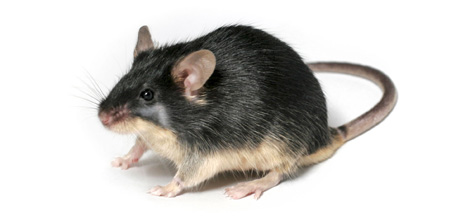Autism is one of three autism spectrum disorders caused by the nervous system's failure to develop properly. Typically, it is detectable by age two or three and is characterized by abnormal social interaction, inability to communicate, and restricted and/or repetitive behaviors. Worldwide, autism affects about one of every 1,000 children. In the United States, its incidence is much higher, affecting about nine of every 1,000 children. Autism seems to have a strong, though little understood, genetic basis. Environmental risk factors, such as heavy metals, pesticides and infections, are also suspected (Herbert 2010). Although there is no cure for autism, some early interventions can help. Risperdal (risperdone) and Prozac are moderately successful for treating some symptoms (West et al. 2009). In 2011, a collaborative research effort led by Georgianna Gould, Ph.D., and Lynette Daws, Ph.D., from the Department of Physiology, University of Texas Health Science Center, San Antonio, concluded that autism-like behaviors in the BTBR T+ tf/J (BTBR, 002282) mouse are likely due to defects in the serotonin neurotransmitter system (Gould et al. 2011). The research findings may lead to novel interventions in the fight against autism.
BTBR mice exhibit serotonin defects

Considerable research in humans and rodents indicates that autism is at least partly caused by defects in the serotonin (5-HT) neurotransmitter system, notably the 5-HT1A and 5-HT2A serotonin receptors and the SERT serotonin transporter. BTBR mice exhibit autism-like play, social and repetitive behaviors (in particular, excessive self-grooming), and they respond to citalopram, a SERT blocker, more dramatically than do C57BL/6J (B6, 000664) mice. Several researchers have established that the autism-like behaviors of BTBR mice are inherited (Yang et al. 2007).
To determine if the autism-like behaviors of BTBR mice are due to serotonin defects, Gould, Daws and their colleagues compared the ligand-binding properties of the SERT transporter and of the 5-HT1A and 5-HT2A receptors in BTBR mice to those of C57BL/10J (B10, 000665) and B6 mice. They found that SERT density in most of the BTBR brain regions measured is significantly lower than it is in comparable B10 brain regions, and that the ligand-binding capacity of SERT from BTBR hippocampi is significantly lower than it is in B6 hippocampi. Although the density of 5-HT1A receptors is comparable in the BTBR and B10 brain regions measured, evidence indicated that BTBR hippocampi 5-HT1A receptors have a higher capacity to activate G-proteins. The 5-HT2A receptor density and ligand binding ability are comparable in all BTBR and B10 brain regions evaluated.
Serotonin modulators mitigate some BTBR behaviors
The researchers tested the effects of acute doses of fluoxetine (Prozac) (a SERT blocker), risperidone (a 5-HT2A receptor antagonist) and buspirone (a partial 5-HT1A receptor agonist) on social and repetitive behaviors of BTBR mice. These three compounds regulate serotonin activity and have inconsistent, limited and sometimes harmful effects in rodent models and in people with autism. Only buspirone and fluoxetine were found to make BTBR mice significantly more social; treated mice spend proportionally more time socializing with a strange mouse than do saline-treated controls. Interestingly, BTBR mice treated with either buspirone or fluoxetine show a reduced interest in social novelty; when introduced to a second stranger mouse, they do not show a preference for either stranger. In contrast, the saline-treated controls spend more time investigating the newer mouse. Compared to either buspirone- or fluoxetine-treated mice and saline-treated controls, risperidone-treated mice spend less time investigating strange mice and novel surroundings.
Regardless of treatment, BTBR mice spend comparable amounts of time burying marbles (an index of repetitive behavior). However, eliminating from the analysis one saline-treated control that did not bury any marbles suggests that risperidone-treated mice bury significantly fewer marbles than the saline-treated controls.
In summary, Daws and her team concluded that the autism-like behaviors of BTBR mice are likely due in part to altered hippocampal SERT serotonin transporter and/or altered 5-HT1A serotonin receptor function. These findings may lead to the identification of additional therapeutic targets for treating human autism.
References
Gould GG, Hensler JG, Burke TF, Benno RH, Onaivi ES, Daws LC. 2011. Density and function of central serotonin (5-HT) transporters, 5-HT1A and 5-HT2A receptors, and effects of their targeting on BTBR T+ tf/J mouse social behavior. J Neurochem 116:291-303.
Herbert MR. 2010. Contributions of the environment and environmentally vulnerable physiology to autism spectrum disorders. Curr Opin Neurol. 23:103-10.
West L, Waldrop J, Brunssen S. 2009. Pharmacologic treatment for the core deficits and associated symptoms of autism in children. J Pediatr Health Care 23:75-89.
Yang M, Zhodzishsky V, Crawley JN. 2007. Social deficits in BTBR T+tf/J mice are unchanged by cross-fostering with C57BL/6J mothers. Int J Dev Neurosci 25:515-21.